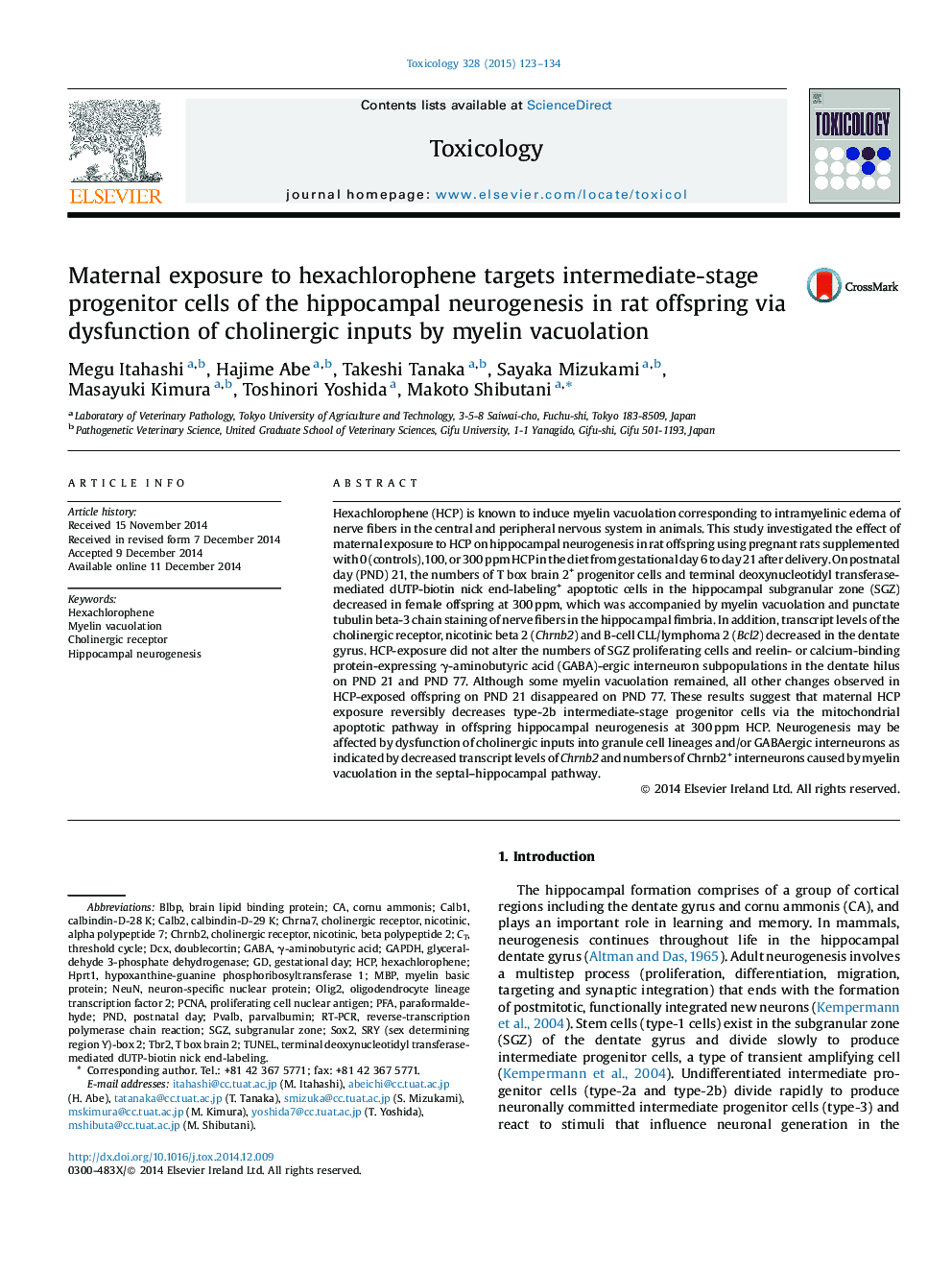| Article ID | Journal | Published Year | Pages | File Type |
|---|---|---|---|---|
| 5859123 | Toxicology | 2015 | 12 Pages |
Abstract
Hexachlorophene (HCP) is known to induce myelin vacuolation corresponding to intramyelinic edema of nerve fibers in the central and peripheral nervous system in animals. This study investigated the effect of maternal exposure to HCP on hippocampal neurogenesis in rat offspring using pregnant rats supplemented with 0 (controls), 100, or 300 ppm HCP in the diet from gestational day 6 to day 21 after delivery. On postnatal day (PND) 21, the numbers of T box brain 2+ progenitor cells and terminal deoxynucleotidyl transferase-mediated dUTP-biotin nick end-labeling+ apoptotic cells in the hippocampal subgranular zone (SGZ) decreased in female offspring at 300 ppm, which was accompanied by myelin vacuolation and punctate tubulin beta-3 chain staining of nerve fibers in the hippocampal fimbria. In addition, transcript levels of the cholinergic receptor, nicotinic beta 2 (Chrnb2) and B-cell CLL/lymphoma 2 (Bcl2) decreased in the dentate gyrus. HCP-exposure did not alter the numbers of SGZ proliferating cells and reelin- or calcium-binding protein-expressing γ-aminobutyric acid (GABA)-ergic interneuron subpopulations in the dentate hilus on PND 21 and PND 77. Although some myelin vacuolation remained, all other changes observed in HCP-exposed offspring on PND 21 disappeared on PND 77. These results suggest that maternal HCP exposure reversibly decreases type-2b intermediate-stage progenitor cells via the mitochondrial apoptotic pathway in offspring hippocampal neurogenesis at 300 ppm HCP. Neurogenesis may be affected by dysfunction of cholinergic inputs into granule cell lineages and/or GABAergic interneurons as indicated by decreased transcript levels of Chrnb2 and numbers of Chrnb2+ interneurons caused by myelin vacuolation in the septal-hippocampal pathway.
Keywords
MBPoligodendrocyte lineage transcription factor 2PvalbSRY (sex determining region Y)-Box 2PCNACALB2CALB1CHRNB2HPRT1CHRNA7Sox2BLBPSGZTbr2NeuNDcxPNDGAPDHHCPOlig2RT-PCRPFAProliferating Cell Nuclear Antigenγ-aminobutyric acidcornu ammonisTUNELdoublecortingestational daypostnatal daysubgranular zoneHippocampal neurogenesisHexachlorophenereverse-transcription polymerase chain reactionparaformaldehydeParvalbuminbrain lipid binding proteinneuron-specific nuclear proteinMyelin basic proteinthreshold cycleGABAglyceraldehyde 3-phosphate dehydrogenasecholinergic receptor
Related Topics
Life Sciences
Environmental Science
Health, Toxicology and Mutagenesis
Authors
Megu Itahashi, Hajime Abe, Takeshi Tanaka, Sayaka Mizukami, Masayuki Kimura, Toshinori Yoshida, Makoto Shibutani,
